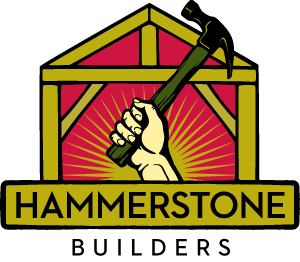Woodworking 101 is (the name of a Hammerstone class that recently ended, and) a fitting title for this blog post, because I want to talk about the difference between carpentry and woodworking.
There is no one way to delineate between these two – very similar – categories. It’s generally about precision: woodworking is often based on accuracy down to the smallest measures of exactitude, while carpentry is more concerned with the overall stability of its finished product than with infinitesimal adjustments. The other differences between them follow from this distinction. Carpenters tend to work on building-scale projects, framing and sheathing walls, floors, and ceilings; they usually work on a job site, often in and around their project. Woodworkers are mostly preoccupied with furniture or other items small enough to fit on a table, like cabinets and bowls; they usually work in a shop, working around their project on a table or workbench.
But there are gray areas, too. Consider trim carpentry. It’s usually performed on the job site, although prep work could be done in a shop. It is concerned with precise measurements, but the finished product is inseparable from the building.
It is fair to say, I think, that most carpenters will do some woodworking in the course of their normal work. Trim carpentry is a great example of this. And many woodworkers will get into some aspects of carpentry, whether it’s rough cutting their own lumber or simply working on bigger projects.
And while the working style, tools, and products may differ, many of the same skills apply in each field. It’s important to make informed decisions, know your materials and tools, and act thoughtfully and deliberately. (This also makes great life advice.)
I see the appeal of both. Carpentry happens on a scale that makes progressing on a project tremendously satisfying, if sometimes slow. Plus, the products of carpentry can have a tangible effect on a person or a place. On the other hand, the refinement of woodworking – the feeling you get when you slide your hand over a joint so fine you can’t tell where one piece of wood ends and another begins – can be a source of real delight, and often the fruits of your labor are useful in a specific way.
What do you think? If you prefer one over the other, what do you like best about your favorite?



